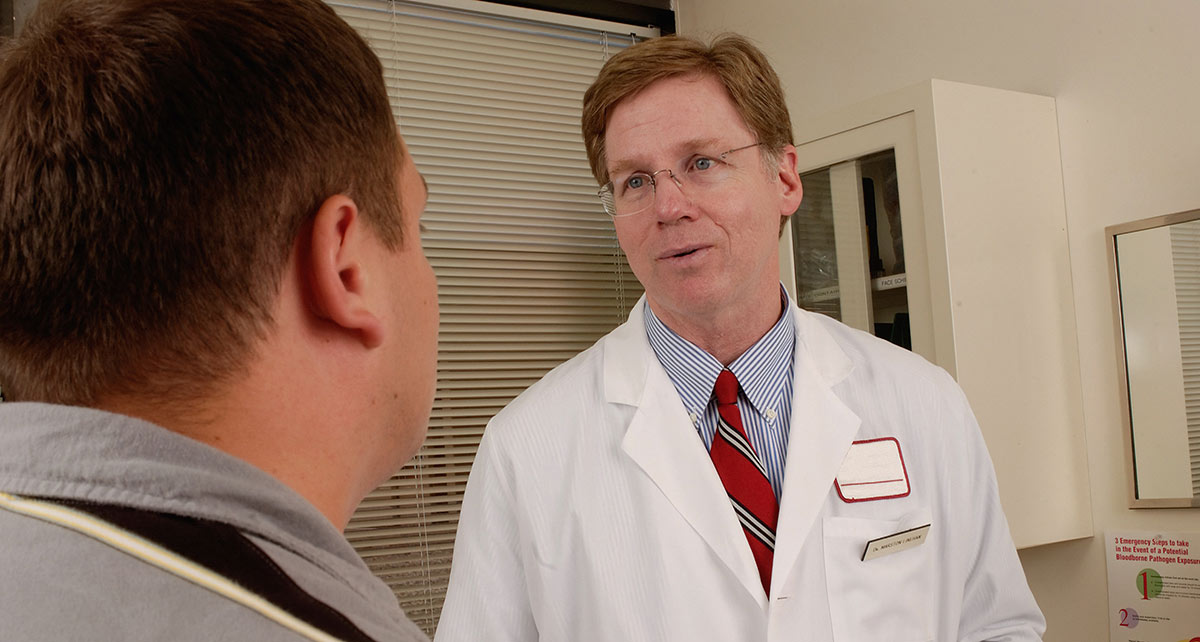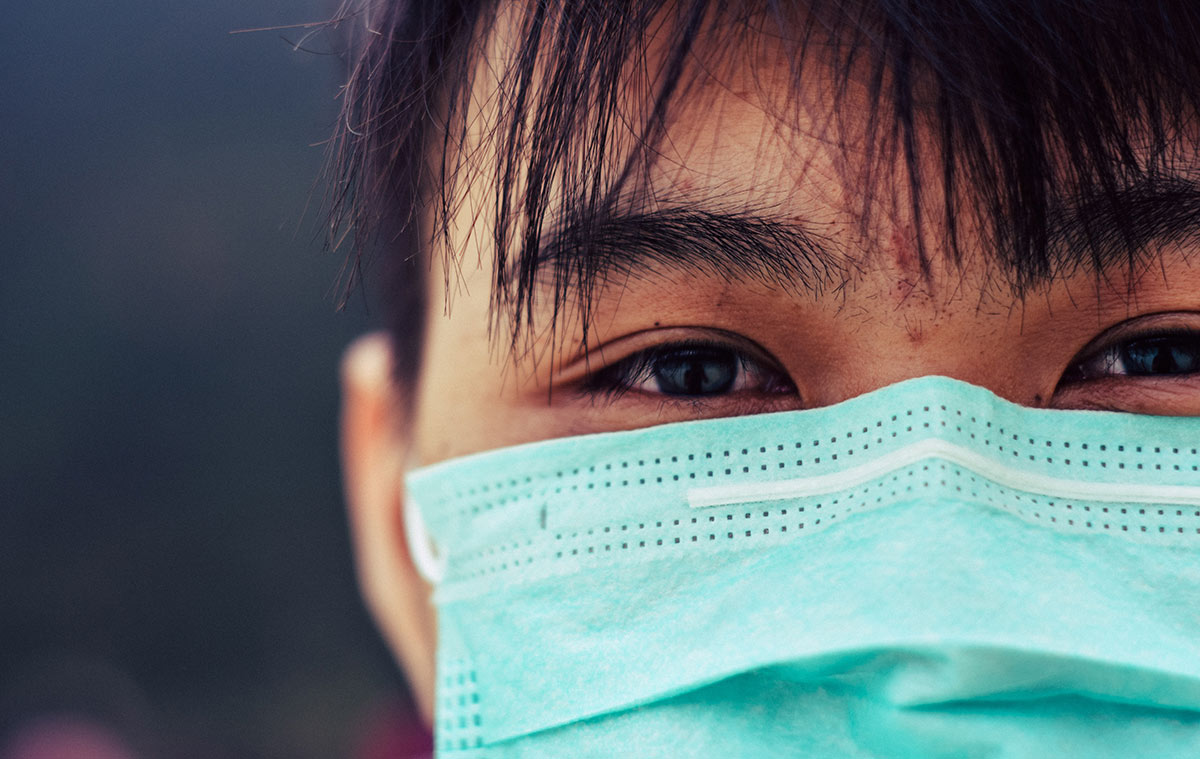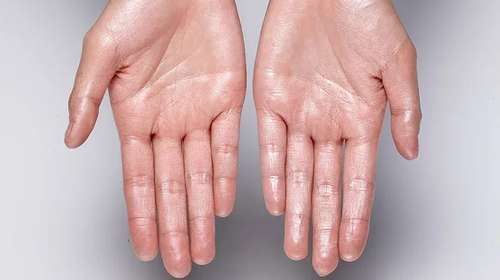As a dermatologist, you see patients for acne all the time. You might prescribe lifestyle changes or medication to help them. But you’ve seen it happen too often: patients who won’t follow your advice or take their prescriptions.
It’s hard to know what to do in this situation. You might wonder: Is the patient in denial? Having a hard time following directions? Maybe they’re just not willing to give up certain foods.
Both teens and adults with acne can be stubborn when it comes to changing their habits. Here are some tactics for treating acne when your patients won’t listen.
Encourage Compliance

According to the National Library of Medicine, only about 50% of patients take their medication as prescribed. That’s shocking when you consider that the non-compliant patients will, obviously, not become as well as they could.
According to research published on PubMed, “Strategies for improving compliance include giving clear, concise, and logical instructions in familiar language, adapting drug regimens to daily routines, eliciting patient participation through self-monitoring, and providing educational materials that promote overall good health in connection with medical treatment.”
Let’s break that down. First, make compliance as easy as possible. Make sure the patient understands your instructions. Then ask if they take any other medications and when (day, night, etc). If the patient needs medication, try to time it so that they just add it to their existing habit. They’ll have a much easier time simply adding a medication to their routine.
Ask more questions, such as:
- When will they take their medication?
- Will they take it with breakfast? Or with their morning coffee?
- How about right before bed?
- Where do they keep the pills? Do they use a pill organizer?
Process matters. Ask them to get specific, and they’re more likely to take the prescription. Finally, ask your patient to repeat the drug regimen back to you in his or her own words.
You can also encourage your patients to use their phones. Many health systems’ apps include pill reminder programs, or the patient can find one of many programs that exist online.
Talking to Teenagers About Acne
Your teenage patients may know they have a problem with acne, but don’t want to talk about it. They might be embarrassed or simply want to ignore it. But as their dermatologist, it’s your job to help them.
Teens may feel more comfortable talking about their issues if mom or dad is out of the room. If possible, ask them to step out while you talk to your patient. Then, let the teenager speak for themselves.
The first step is always listening. Have a two-way conversation to establish trust and compassion. Take their concerns seriously. The last thing you want to say is, “Don’t worry. Acne will go away in a few years.” Teenagers are interested in that happening right now.
Ask them what they know about face cleansing and talk about establishing a cleansing routine. Everyone should wash their face morning, evening, and after sweating. (And don’t forget to moisturize afterward.) You may need to spell it out in detail, because they might not have anyone else in their life who’s ever explained this to them.
Your patient may have financial concerns. If their parents aren’t willing to provide skin care products, their options could be limited. Have some low-cost suggestions available for them.
Just as before, questions are the answer. Once you’ve talked through facial cleansing and any other treatment, ask how they’re going to incorporate it into their routine. This sets them up for success, because they’ll be visualizing their future actions. It makes it easier to follow through when the time comes. If prescriptions are recommended, talk through how they are going to take them, as discussed above.
Encourage a Balanced Diet

You may want to call the parents back into the room, because they’ll be integral to the success of this part.
If your patient is like most Americans, they probably drink milk and eat sugary foods. There’s a lot of research indicating that diets high in dairy or sugar might exacerbate acne.
According to Harvard Medical School, “One meta-analysis of 14 observational studies that included nearly 80,000 children, adolescents, and young adults showed a link between dairy products and increased risk of acne. And some studies have linked high-glycemic-index foods (those that cause blood sugar levels to rise more quickly) and acne.”
The best thing parents can do is model good behaviors, and bring healthy foods into the home. Teenagers like snacks, and they’ll snack on whatever is available. So bring home healthy ones.
Cut back on foods with a high glycemic index:
- Processed carbs, like white bread and baked goods
- Sugary cereals
- Sodas and sweets, including milk chocolate or any chocolate less than 80% cacao
And eat more:
- Fruits
- Vegetables
- Whole grains
- Healthy sources of protein
Dietary changes can work wonders. According to Healthline, “In a large study from 2009, more than 2,000 participants were placed on a low-glycemic diet. Not only did they lose weight, but 87 percent of the study’s participants also found they had less acne. Additionally, 91 percent said they needed less acne medication.”
If the parents and teenager are willing, have them try a lower-sugar diet for a while. They may also consider cutting out dairy. Have them keep a food diary to help the patient identify foods that trigger outbreaks.
They may balk at all these changes. After all, you are asking them to change part of their lifestyle. Remind them that the focus is on progress, not perfection. They are not “messing up” their diet if they have ice cream one day. There is no wagon to fall from, and no hill to slide down. They can simply make good choices moving forward.
Adult-onset Acne
Acne that occurs after the age of 25 is considered adult-onset acne, or post-adolescent acne. The patient might be quite frustrated, having believed that acne is something that only happens to teenagers.
And yet, you may still have trouble getting your patients to eat a healthy diet, or take medication. Don’t ask them to make many changes at once, as they are likely to get overwhelmed. Invite them to make small changes that build up over time. There’s no need to change their entire diet overnight, for instance.
With both teenagers and adults, changes in their face will likely take time. There is no instant fix, so encourage patience. Invite them to be gentle with themselves and allow the medication or dietary changes to take effect.
What About Isotretinoin (Accutane)?
Researchers have called isotretinoin (Absorica, Absorica LD, Accutane, Amnesteem, Claravis, Sotret), “[T]he most effective treatment for severe and recalcitrant acne.” It is also prescribed for treatment-resistant acne.
Isotretinoin can be life-changing. It can reverse terrible acne, and clear a person’s skin permanently. After gaining the perfect skin they’ve always wanted, the patient’s self-esteem and confidence can rise considerably. With isotretinoin, there’s a huge potential for improved quality of life.
However, the drug has been surrounded by controversy due to highly publicized links with depression, suicidality, and inflammatory bowel disease.
The potential risks have been thoroughly studied. The same researchers cited above have concluded that, “Despite common misperceptions, there is weak evidence for increased incidence of depression, suicidality, or inflammatory bowel disease with isotretinoin use.”
According to SingleCare.com, “Isotretinoin is the most powerful, FDA-approved drug dermatologists have in their arsenal to help patients prevent and manage their acne, but there are risks to be considered.” Like most medications, potential side effects must be weighed against possible benefits.
If you think isotretinoin is right for your patient, talk to them about the potential risks and rewards. Ultimately, it will be their choice whether to move forward.
Help Your Patients Fight “Mascne”

“Mascne” is a portmanteau of “mask” and “acne.” Its technical name is Acne mechanica, and it’s caused by the mechanical friction of cloth or paper masks against the skin. The mask can irritate pores around the mask edges, leading to pimples and bumps.
Teens and adults alike may suffer from mascne. Some schools still require masks, and many adults in the workplace are required to wear them.
If you have patients facing mascne, help them by reminding them of the following:
- Wash your masks frequently. Rule of thumb: treat it like underwear. One wear and it goes into the wash.
- Rotate masks several times throughout the day.
- Use a gentle, fragrance-free laundry detergent.
- 100% cotton masks are preferred.
They should also avoid putting makeup on areas the mask touches, and keep skin clean and moisturized.
This step is often overlooked: The mask should fit properly. It doesn’t help anyone (or the skin) to be constantly adjusting the mask. Get it fitted properly, and then leave it alone.
Remind them not to overwash their face. (Overwashing can dry out the skin and cause irritation.) Washing should be limited to morning, evening, and after sweating. In-between, suggest they use a fragrance-free facial wipe.
Treat mascne like you would other acne of its type. You might recommend over-the-counter treatments like pimple patches or benzoyl peroxide ointment, or some other treatment, as needed.
Encourage Persistence
As dermatologists, we know that rarely does the skin change overnight. But as residents of a fast-paced world, our patients can become frustrated by the slowness of change. You can increase medication compliance by encouraging persistence. Remind them that change is possible, with just a little work and patience on their part.
Suggest that they incorporate dietary and lifestyle changes slowly, one at a time. That way, they won’t be overwhelmed and the changes are more likely to stick. Review the treatment plan together to ensure they understand it.
The easiest thing they can do is take their medication as prescribed. As stated above, go over the plan with them and make sure they’re incorporating it into their daily routine.
Finally, just listen to your patient’s concerns. Make them feel heard. If they’re sure you’re on their side, they’re more likely to take your advice. You’re a team, and together you can do great things.













